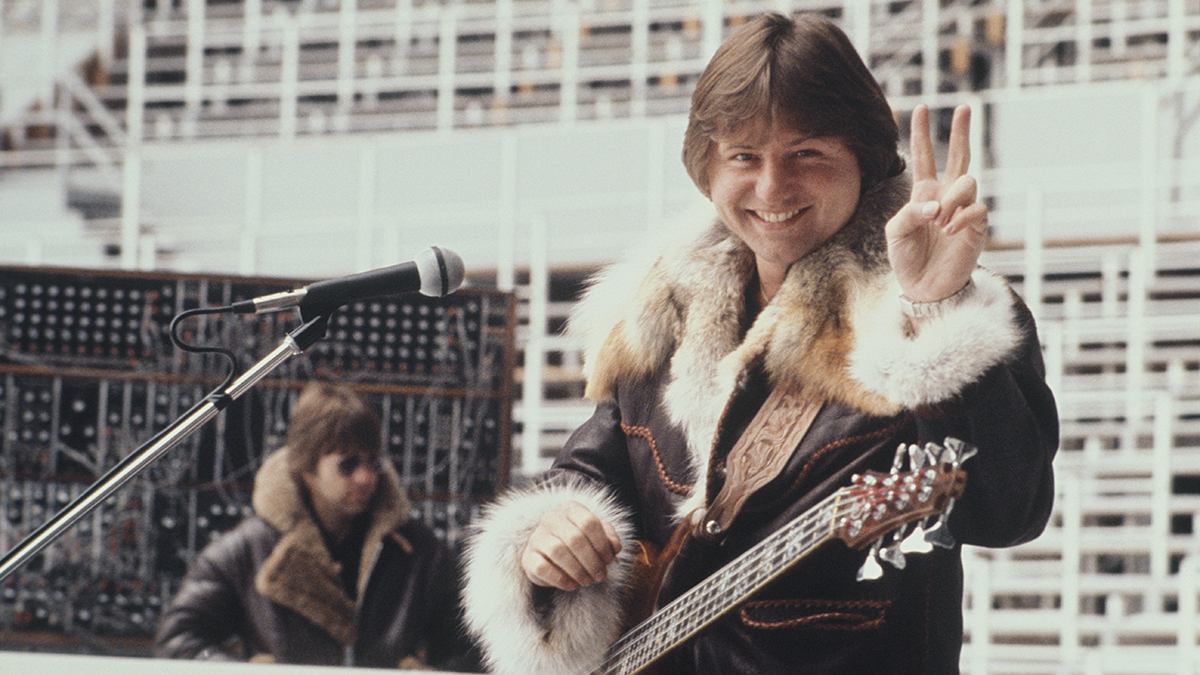20 gear innovations from the ‘80s that changed the game for guitar players
From Super Strats to classic stompboxes and rack-mounted signal processors, the decade transformed guitar with new tech promising fresh sounds and all-new musical horizons
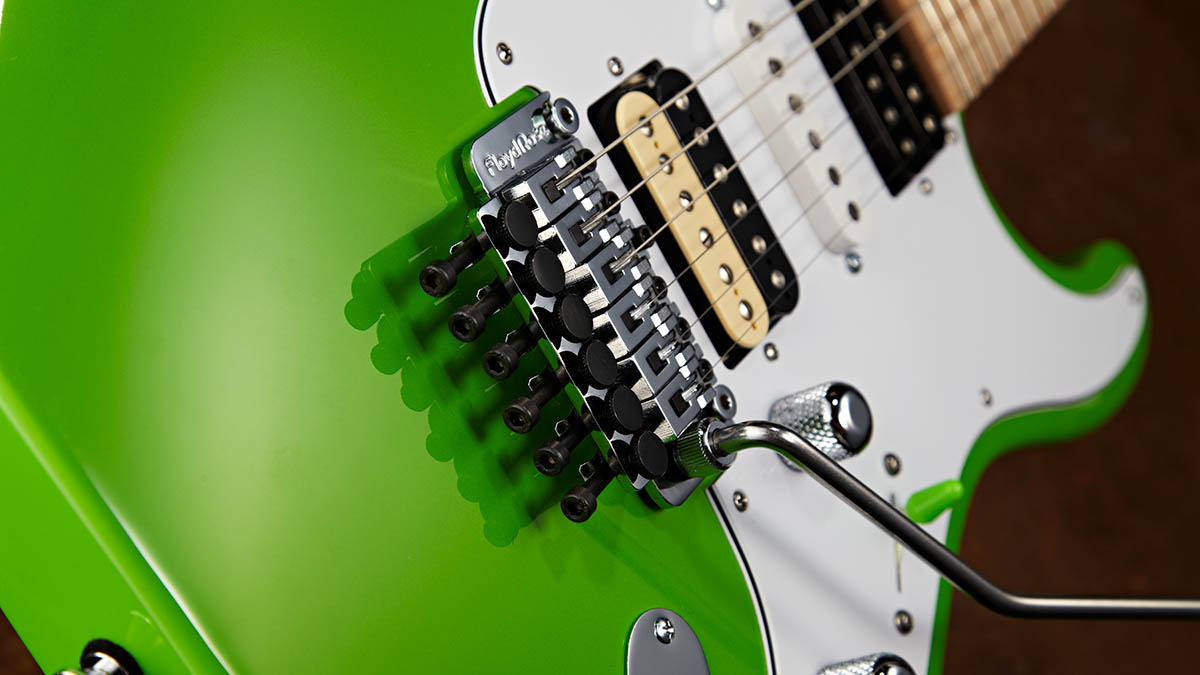
Electric guitar technology hardly changed during the first 30 or so years. Les Paul and Leo Fender gave us solid body guitars, Jim Marshall accidentally created desirable amp distortion, a smattering of floor-based effects were created and a few bits of gear were borrowed from organ players – including wah pedals and Leslie speakers.
But, for the most part, guitarists didn’t have many choices in terms of essential gear – and even fewer technological options for unique expression.
And then it happened: The 1980s! It was a fortuitous convergence of events, a shade-your-eyes collision of technology and inspiration that transformed the guitar almost overnight.
Silicon Valley was chiefly changing the world, as a by-product of the military industrial complex. Their affordable miniaturization of complex electrical pathways placed high-powered integrated circuits into all manner of personal, electronic products, not to mention the recording and musical instrument industries – the dreams of engineers who grew up watching Star Trek and The Outer Limits finally became reality.
At the same time, inspired young musicians started transferring the blinding finger speed and deft coordination they’d honed on arcade machines and video game consoles to the guitar, resulting in a revolution of technique, innovation and intensity.
The months and years that followed were a guitar renaissance in every sense of the word, and we’re still riding the energy wave of that tech explosion. As a reminder of our technological roots, and to honor the visionary engineers of the time, Guitar World’s old-schoolers racked their gray skulls to comprise a list of the decade’s most impactful gear.
1. Boss TU-12H Tuner (1982)
Electronic instrument tuners existed before the TU-12, but they were bulky and anything but affordable or practical. This was the first portable guitar tuner, actually the first portable tuner for any instrument, battery powered and highly accurate. It accepted a standard quarter-inch guitar plug or would register pitch with its built-in microphone.
All the latest guitar news, interviews, lessons, reviews, deals and more, direct to your inbox!
It was intentionally sized and shaped to fit into the accessory cavity of a guitar case (most guitar pedals still don’t fit in there). Everybody had one of these, on touring rigs, tied down to pedalboards, on their music stand or sitting atop their amp. I don’t know how many of these were sold, but guitarists never again had an excuse to be out of tune.
2. EMG Active Pickups (mid '70s)
EMG (Electro Magnetic Generator) wasn’t the first to conceive of active pickups, but they were the first to house the battery-powered preamp and coils in one practically indestructible package.
The advantages of a preamp included the potential for more output, quiet operation, clarity and a specifically tuned harmonic response.
Their models 81/85 humbuckers and SA single coils became very popular with players who were pushing a signal through high levels of preamp gain. EMGs’ uniquely energetic tone can be heard on many recordings by Zakk Wylde, David Gilmour, Metallica and Mark Knopfler, just to name a few…
3. Ibanez TS-9 Tube Screamer Overdrive (1982)
If you see a slime-green box on a pedalboard, safe bet it’s the ubiquitous Ibanez Tube Screamer overdrive. Designed by Roger Gresco in the late Seventies, this is the overdrive pedal to which all others are compared.
At its heart is the famous JRC (Japan Radio Company) 4558 Op-Amp (operational amplifier). It used diodes, in place of its fuzzy predecessor’s transistors, to create tube-like, midrange focused symmetrical distortion – very smooth, tubelike and natural.
The original TS-808’s rounder response was replaced in the early Eighties by the TS9 variant, offering an edgier, brighter tone that was better-suited to hard rock and metal. Numerous iterations followed, including who knows how many DIY copies, but none have achieved the notoriety or praise of that original pair.
4. Ibanez JEM 777 (1987)
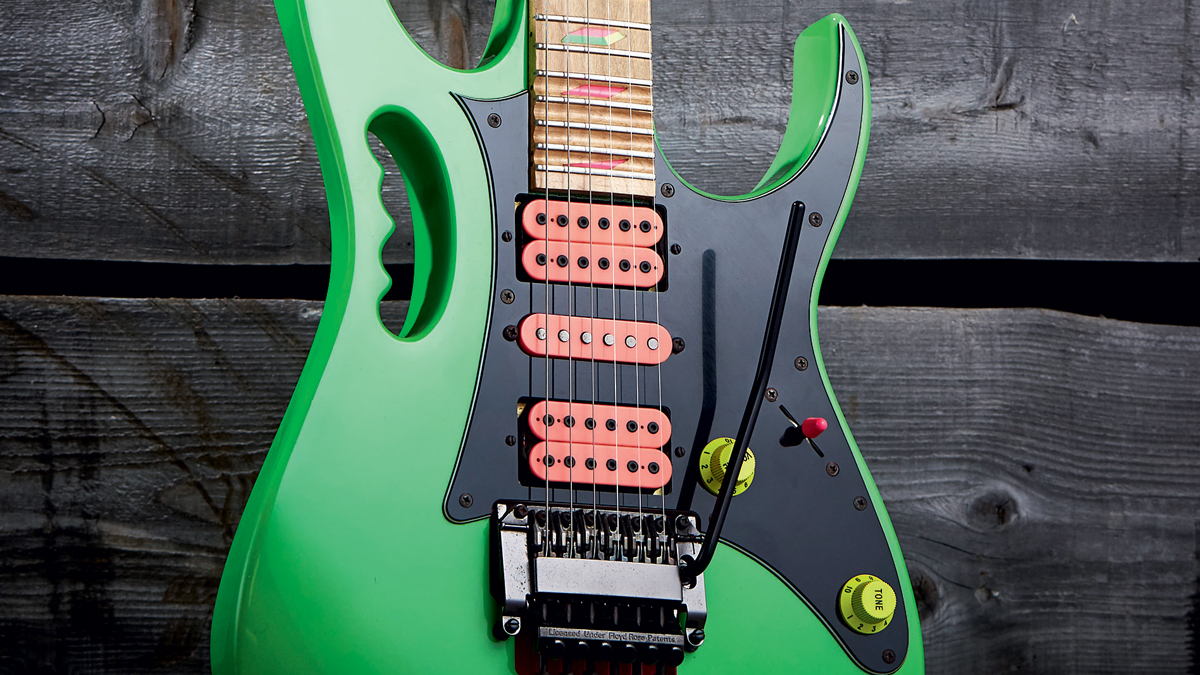
When Steve Vai got the David Lee Roth gig in 1986, he was simultaneously being courted by numerous guitar companies. Everyone wanted to build the wildest ax swinger his dream guitar.
As it turned out, only Ibanez was willing and able to take a chance on Steve’s non-traditional ideas – and, oh, how that gamble paid off. His first design was the JEM 777, offered in three era-appropriate neon colors: Loch Ness Green, Desert Sun Yellow and Shocking Pink. Its most innovative feature was the recessed mounting and route behind the floating tremolo, known affectionately as the lion’s claw.
It allowed players to pull up on the bar, thereby skyrocketing the pitch, without the fine tuners impacting the body. Since then, most guitar manufacturers adopted the new method as the standard mounting style for locking tremolo systems.
5. Marshall JCM800 (1981)
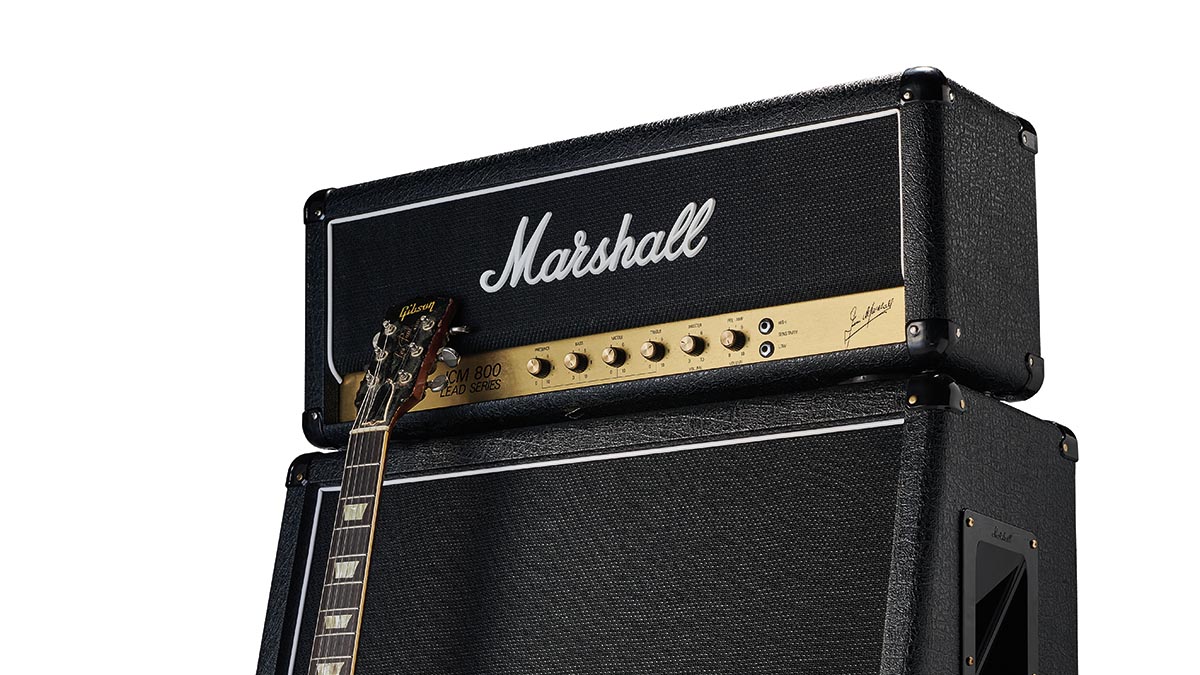
Before the Marshall JCM-800, the only way to get a cranked Marshall tone was to… well… crank it! By adding a master volume, players could add moderate levels of preamp saturation without blowing their heads across the room. [Technically speaking, Marshall introduced master-volume amps as early as 1975 — and Hiwatt had been making master-volume models since the late '60s.]
This idea of deriving more gain from the preamp had been around for a long time, most notably utilized by Mesa/Boogie, but the specific British tone and response of this iconic amp made it the workhorse of 1980s guitar slingers around the globe.
It’s important to mention here that Mike Soldano’s 1987 creation of the super high-gain SLO-100 amp kicked off the preamp gain wars that continue today.
6. Digital Rack Effects Units (1980-89)
There are simply too many important rack units to list, so we had to just choose a few of the most widely used on stage and recordings. TC Electronics’ 2290 Delay set the bar for delay fidelity and accuracy.
Eventide’s H3000 used precise pitch shifting and harmonization to create the tones of Vai, Satch and anyone else who could afford the monster. Korg’s SDD-3000 delay was the Edge’s not-so-secret weapon on U2’s most iconic tracks. The Lexicon PCM 41 was another top-shelf delay hailed by guitarists and studios for its superlative tone, accuracy and features.
Yamaha’s SPX90 was a more affordable multi-effects unit, most noted for its inimitable symphonic chorus setting. This section wouldn’t be complete without also paying tribute to engineers Dave Smith and Chet Wood for developing MIDI (Musical Instrument Digital Interface), making it possible for multiple sound processing units and settings to be programmed and switched simultaneously.
7. Boss SD-1 (1981)
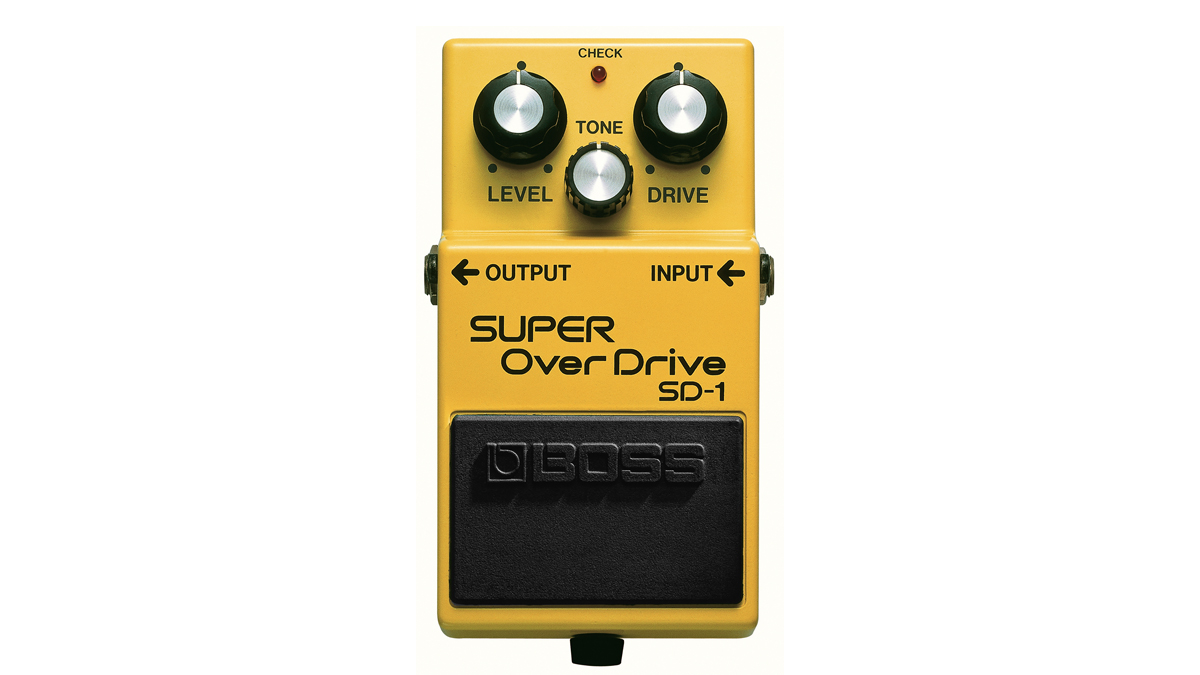
This sunflower yellow box was and is a shredder’s best friend, and perhaps second only in scope of use to the Tube Screamer. Inside, it was very similar to the Ibanez TS9, but utilized a slightly higher gain version of the JRC4558 chip.
More importantly, it created its aggressive and harmonically distinct response with asymmetrical clipping (patented at the time by Boss), whereas the Tube Screamer was based on symmetrical clipping. This added gain and asymmetrical distortion was ideal for pulling out the most obnoxious squealing pinch harmonics.
When paired with a Marshall JCM800 or similar circuit, the combination was affectionately known as a Jersey Rig, referencing the numerous Garden State guitarists who favored this setup, including Zakk Wylde and Richie Sambora.
8. Floyd Rose Double Locking Bridge with Fine Tuners (1982)
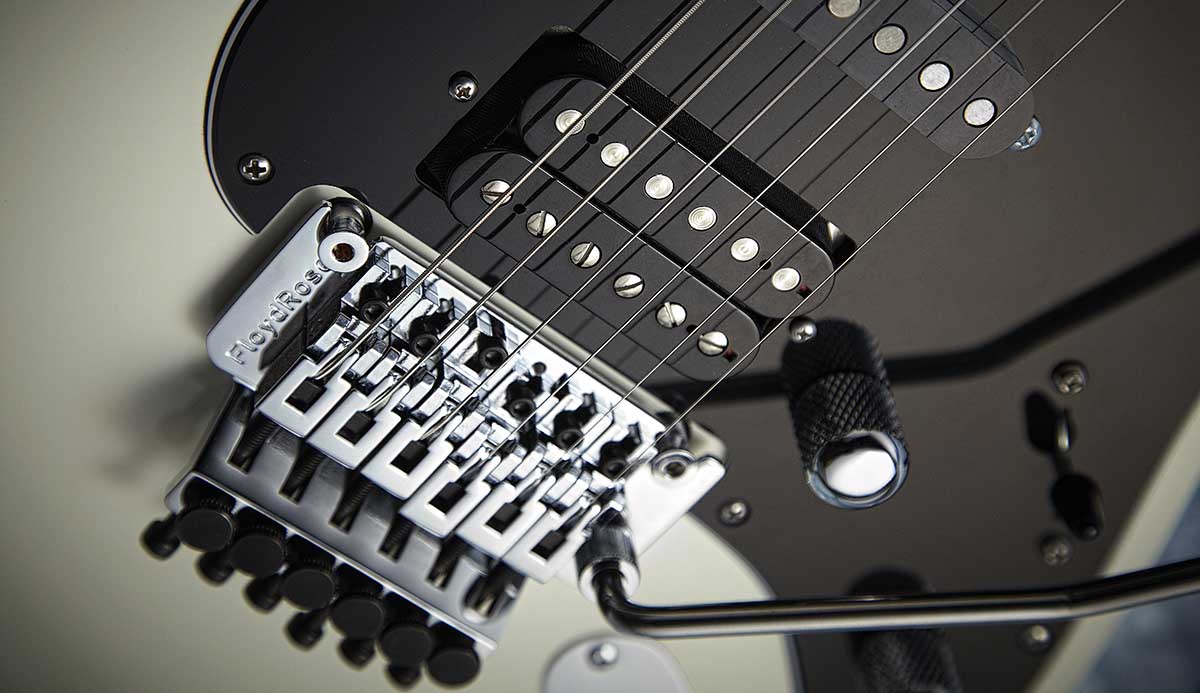
Floyd Rose’s revolutionary, locking bridge system came to prominence when Kramer guitars and their most notable whammy magician, Eddie Van Halen, noticed it at a trade show.
Once the strings locked at the nut, there was almost no amount of bending or bar acrobatics that could throw them out of tune. Soon thereafter, fine tuners were added to the design, so that minute adjustments were possible.
It exists today in that same, essentially perfect form, and is licensed around the world for other companies’ variations.
9. Boss CE-2 (1979/80)
If someone is going to create a tone emblematic of the 1980s, it almost has to include chorus. The CE-2 was the first compact chorus pedal, borrowing heavily from its bulkier predecessor, the Boss CE-1, and Roland’s famous Jazz Chorus amplifiers.
Its lush midrange affectation brought the effect forward in the mix, making it particularly well suited to guitar-dominant tracks. Even though it was technically introduced in the last months of 1979, this was a sound that defined the era, and was utilized by players of all genres, including Prince.
10. Steinberger Headless guitars (1980)
Ned Steinberger was neither a musician, nor an instrument builder, when he decided to start crafting radical guitars from a proprietary composite material. These remarkably resonant and conspicuously headless instruments quickly found their way into the hands of the world’s most accomplished players.
First was the L2 bass, then the GL2 guitar and later, the maple-bodied GM series of guitars. Let’s not forget to mention that his ingenious TransTrem bridge was the first to maintain all of the strings’ intervallic relationship, so that multiple strings could be simultaneously raised or dropped and amazingly stay in-key.
11. Super Strats (1980)
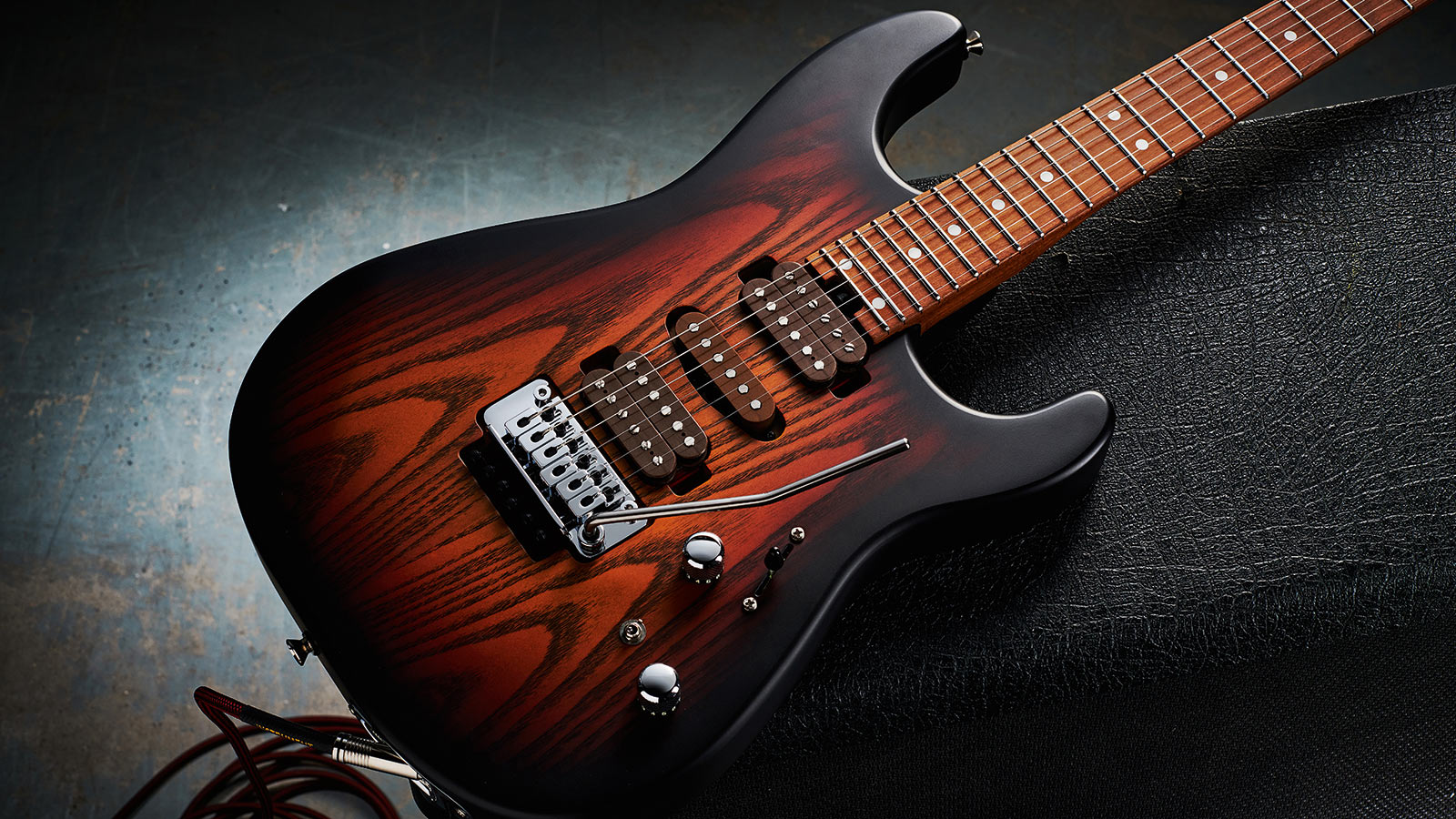
The Stratocaster was a platform begging for modification, because unlike the Les Paul, its bolt-on neck and hole-hiding pickguard made it easy for anyone to completely disassemble, alter-to-taste and quickly return to playing form.
Guitar luthiers and fledgling companies like Charvel, Jackson, Dean and Kramer caught onto this trend in the early Eighties and started offering modernized adaptations of the Stratocaster, typically with a single humbucker in the bridge position, a Floyd Rose bridge and a flatter-radiused neck. These were the preferred weapons of most shredders and are still prized by the technically adept.
12. Mesa/Boogie MK2 (1980)
Mesa/Boogie is credited with scores of innovations through its 50-plus years, especially in terms of guitar amp functionality, but we have to spotlight the Mark 2’s particular importance as the first channel-switching amplifier.
This was especially appropriate to the world of Eighties music, where sonically diverse songs regularly required a rig that could seamlessly switch between clean and overdriven tones.
It really kicked off an endless competition among amp designers to include as many tones and features as possible in a single chassis. As a little Easter Egg for all of you metal-tech historians, the Mark 2 C++ did actually exist as a rarely performed high-gain modification.
13. Celestion Vintage 30 (1986)
Celestion’s low-wattage Greenback and Alnico speakers were favored in the Sixties and Seventies for their warm presence and sweet highs. But, their 15- to 30-watt ratings made them notably fragile dance partners for the ‘this one goes to eleven’ mindset of high-haired Eighties rockers.
The Celestion Vintage 30 combined the tonal characteristics and early breakup of those revered vintage speakers with 60 watts of power handling, quickly becoming the world’s most popular guitar speaker.
14. MTV (1981)
Until MTV, magazines and catalogs were the medium by which most players became aware of new gear. The advent of music videos gave us the first-ever, round-the-clock access in our own homes, to see artists actually performing with the guitars, amplifiers and other pieces of groundbreaking equipment.
It was in many ways an advertisement for musical equipment and the celebration of a lifestyle. For those “who possessed the predisposition” it was even the catalyst that kicked off many careers in music.
The current generation may have a hard time comprehending the impact of Music Television, but for the Eighties youth, it inspired beyond all comparison and bound us through a socially shared experience.
15. Inexpensive Solid-State Amplifiers (1981)
The realization of an inexpensive “first amplifier” was made possible by the advancement of solid-state circuits. Before digital modeling, they replicated the sound and feel of a tube amp, at only a fraction of the cost.
Most of these were small, low-powered combos like Peavey’s Backstage Plus amps, Fender’s Squire series and Crate’s G series. These maintenance-free and capable practice partners were an affordable starting point for students – that actually created some pretty impressive sounds.
16. Rocktron Hush pedal (1983)
Higher gain levels and longer signal chains often created a great deal of unwanted noise and feedback in 1980s rigs. This could be essentially eliminated in the studio, but posed a serious issue in live performance. Rocktron’s invention of the HUSH pedal circuit was invaluable for taming this noise-belching beast.
Multiple iterations followed, as did other company’s solutions, ultimately making it possible for players to enjoy even the most extreme gain settings and complex effect runs with practically zero noise.
17. ADA MP-1 (1987)
When guitarists started building rack systems, the goal was to gain more functionality without compromising tone. ADA’s MP-1 was one of the first tube-based rack preamps that was digitally controlled on the front panel or through MIDI impulses.
It even featured on-board chorus. It was easy to dial in just about any tone from the 1980s, including the crystalline solid-state clean sounds that were so prevalent on recordings of the time.
18. Rockman X100 (1984)
It’s impossible to talk about Eighties guitar tones and tech without a whole chapter devoted to all of the groundbreaking products offered by Scholz Research and Development Inc.
This is the company created by Boston’s (the band, not the city) multi-talented keyboardist, guitarist and engineer, Tom Scholz. Unfortunately, we don’t have the space to feature all of the gear, but the one piece that truly changed how guitarists practiced, wrote and recorded music was the Rockman X100 headphone amplifier.
It was like playing through a tiny personal studio, with multiple settings for gain levels, echo and chorus. Aside from Boston, the unit was famously used for several of Def Leppard’s Hysteria tracks and also by numerous other guitarists.
19. Tascam Portastudio 244 (1982)
This little gem truly altered the way guitarists, and musicians in general, created music. It was finally possible for anyone to record themselves and master down four tracks to a cassette, all with one device in their home, hotel room, etc.
Many similar products followed, but this is the one that really started the personal recording boom and is responsible for countless band demos and early albums.
20. Paul Reed Smith Custom 24 (1985)

Paul Reed Smith’s contributions to the world of guitar design are numerous and notable, but we most often overlook how his appreciation for the finest figured woods changed our perception and expectation of guitars as works of visual art.
When PRS debuted the Custom 24 in 1985, we were introduced to the idea of grading the look of a guitar’s top wood on a 1-10 scale. Ever since, instrument manufacturers have competed to offer the most outrageously figured woods and depth-defying finishes.
And, although I’m sure Paul never intended this by-product, a large segment of modern guitar collectors now select their acquisitions based on the instrument’s appearance alone, rather than functional aspects of tone and playability.
